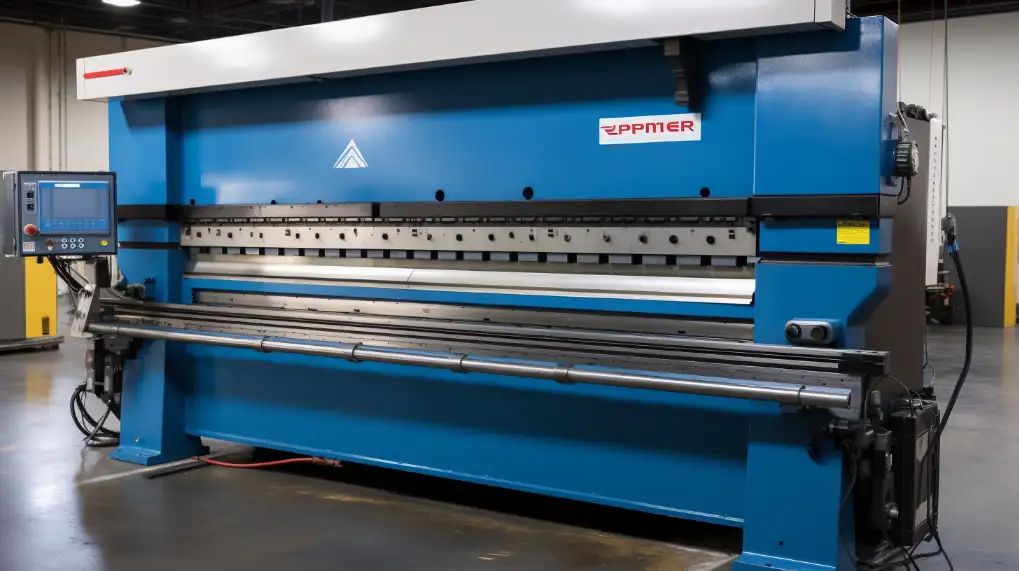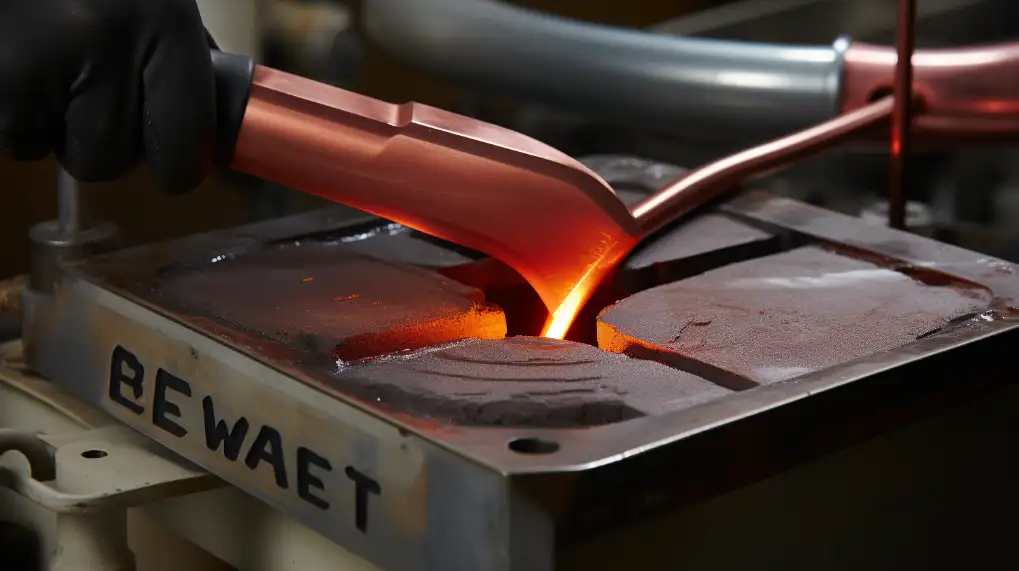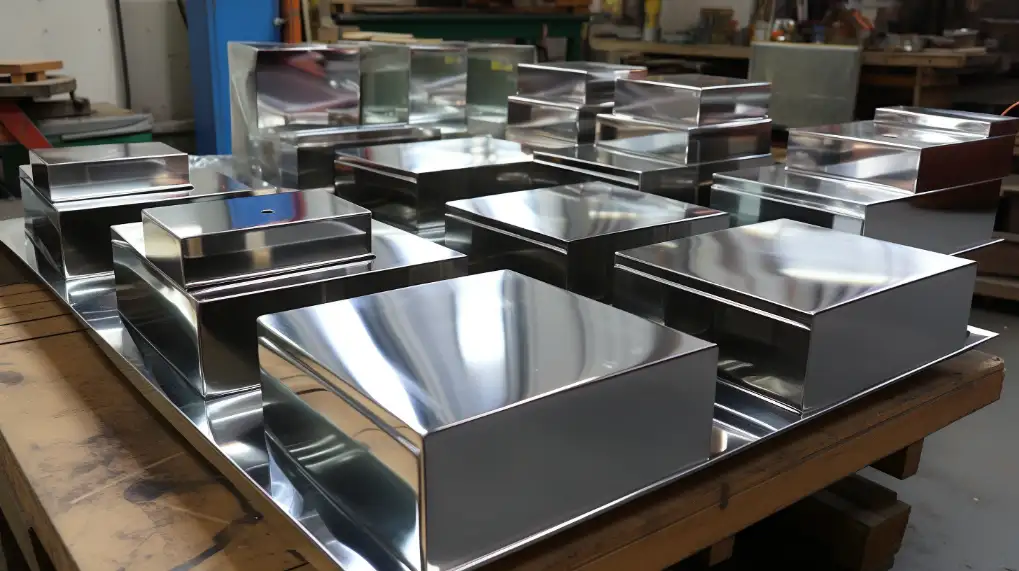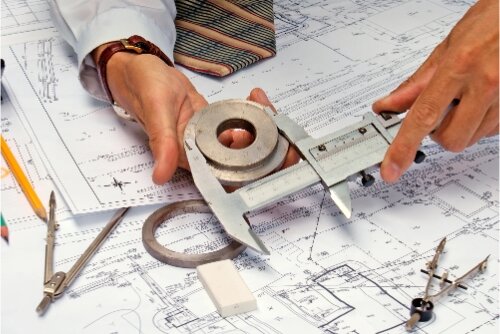Have you ever wondered how to bend stainless steel effortlessly? Understanding this process is essential for anyone, whether a DIY enthusiast or a professional. Discover the secrets of bending stainless steel by diving into the world of metalwork.
Bending stainless steel involves understanding its properties, using the right tools, and applying precise techniques. Methods like heat bending, cold bending, and using a press brake are standard. This process requires patience and practice to ensure the metal is shaped without damage.
Read on to learn detailed, actionable steps and insider tips that make bending stainless steel a manageable, even enjoyable task.
Understanding Stainless Steel Properties
Understanding the unique properties of stainless steel is essential before you begin bending it. The composition of stainless steel is what makes it stand out. It’s a material known for its resistance to rust and corrosion. This alloy is primarily iron with a high percentage of chromium, usually at least 10%. This chromium forms a thin layer of chromium dioxide on the surface of the steel, protecting it from environmental factors.
The different grades of stainless steel have varying amounts of chromium and nickel. This gives each grade its characteristics. A higher nickel content, for example, improves flexibility, an essential factor in bending.
Understanding these properties for multiple reasons is essential:
- Strength: The stainless steel is more robust and complex, affecting its bending response. It takes more force to bend stainless steel and is more likely to snap back into its original form.
- Malleability and Ductility: These properties determine how far you can bend steel before it breaks. The flexibility of your stainless steel will help determine the best bending technique.
- Work hardening: Working with stainless steel makes it more challenging. The phenomenon of work hardening can make it more challenging to bend steel the more you use it. This is something you need to take into account when bending steel.
- Temperature Resistant: The resistance of stainless steel against high temperatures is a double-edged sword. While it’s suitable for many applications, this also means that you need heat to bend the steel, as in heat-bending.
- Corrosion Resistant: While this property doesn’t directly affect bending, it’s a significant reason for choosing stainless steel in many projects. Incorrect bending techniques, however, can damage the protective layer of chromium oxide, which could compromise this resistance.
Choose the Right Tools
The right tool is essential to bend stainless steel successfully. The right tool will make the process easier and guarantee the finished product’s quality and integrity. This guide will help you select the best tools for bending stainless steel:
- Manual press brake: Ideal to handle smaller projects or thinner sheets of stainless. Manual press brakes are perfect for intricate work because they provide control and precision.
- Hydraulic press brake: A hydraulic press brake will be more appropriate for larger projects or thicker stainless steel. It has more power and can handle larger bending jobs.
- Tube Benders: These are required if your project involves bending stainless steel pipes or tubes. Many types of tube benders are available, including rotary drawers and mandrels. Each tool is designed for specific tube sizes.
- Bench Vise and Hammers: A sturdy bench vise and a small hammer can be all you need for simple bending. This method requires more physical effort and is manual, but it allows for quick, on-the-spot adjustments.
- Roll benders: When you want to create gentle curves in stainless steel, these are your tools. Rolling shapes the metal, ideal for creating rings or arcs.
- Heat induction equipment: This is useful for thicker bends in stainless steel. This equipment applies heat in specific areas to make the metal more flexible and bendable without breaking.
- Protective gear: Bending steel, especially with heat, can be dangerous. Always wear protective gear such as gloves, eye protection, and appropriate clothing to ensure your safety.
- Tools for Measuring: Accurate measurements are required to bend precisely. You will need tools like calipers and angle finders to ensure your bends are at the right angles and locations.

How to Prepare the Stainless Steel
Preparing stainless steel properly before bending is essential to ensure quality and accuracy in the end product. This step involves marking the steel, cleaning it, and heating it if necessary. This guide will help you prepare stainless steel to bend effectively:
- Cleaning Surface: Clean stainless steel and remove dirt, grease, or contaminants. You can use a mild degreaser to clean the stainless steel. It is essential to have a clean surface for accurate marking and to avoid defects in the bending process.
- Marking Bends: After cleaning the steel, use a non-permanent marking tool to mark the exact location of the bends. You can use a scribe or chalk to mark the bends. This is important because the lines you mark will guide your bending.
- Material Thickness and Direction of Grain: The thickness of stainless steel will determine how much force is required to bend it. If your stainless steel is visible, you can reduce the chance of it breaking or cracking by bending in parallel with the grain.
- Applying heat (if necessary): For thicker stainless steel pieces or when you need a tight radius, it may be necessary to apply heat to make the material pliable. For this, use heat induction equipment such as a torch. Make sure the steel is heated evenly.
- Setting up Tools and Equipment: Before bending, set up your tools and equipment correctly, and adjust the press brake or tube bender to fit the thickness and width of your stainless steel.
- Safety precautions: Always wear protective gear such as eye and hand protection when working with hot steel. Ensure your workspace has adequate ventilation, mainly if you use heat.
Cold Bending Technique
Cold bending, or forming stainless steel at room temperature, is one of the most effective methods for shaping the material. This method is beneficial for smaller or thinner pieces. This technique uses manual or mechanical pressure rather than heat to bend the sheet. It is a simple and convenient method suitable for many different applications. How to do cold bending effectively:
- Understanding Limitations: Cold bending works best on stainless steel that is thin enough to be manipulated without heating. Cold bending is most effective with sheets less than 1.5mm thick.
- Selecting the Right Tools: Depending on your project’s size, you can use tools such as a bench vise or hand seamers. A metal brake is also an option. Larger projects often require a mechanical press brake.
- Marking The Bend Line Use Your Preparation Marks as a Guide. The bend line’s visibility and accuracy will determine the bend’s quality.
- Aligning Steel: Position the stainless steel into your tool, aligning it precisely along the bend line. If you use a tool like a brake made of metal, ensure that the steel is tightly secured.
- Applying force: Use gradual and steady pressure to bend the steel along marked lines. When using hand tools, this will require strength. Mechanical tools will use the force necessary to operate.
- Monitor the Bend Angle: Check the bend angle regularly using an angle finder. It is important to maintain precision as stainless steel will tend to spring back when you release the force.
- Avoid Overworking Metal: Stainless Steel can crack and become brittle if it is overworked. To avoid overworking the metal, perform cold bending carefully and slowly.
- Finishing a Bend: Remove the steel and inspect the bend after achieving the desired angle. Make any necessary adjustments to the steel slowly to avoid damage.
Heat Bending Method
Heat bending involves applying heat to the stainless steel, making it more flexible. This technique is beneficial when working with thicker stainless or when a smaller bend radius is needed. How to use heat bending effectively:
- Selecting Heat Source: Depending on the thickness and specifics of your project, you can choose from various heat sources. Heat sources commonly used include oxyacetylene torch, induction heating, or even forging for large pieces.
- Prepare the Area: Ensure your work area is well-ventilated and safe when using open flames. Fire safety equipment, such as a fire extinguisher, should be readily available.
- Heat the Steel: Warm the area where you need the bend. Heat the steel until it turns a reddish color. This indicates that it is at a temperature suitable for bending. Heat the steel evenly to avoid hotspots and possible warping.
- Applying Bend: Once the steel has reached the correct temperature, apply force quickly and carefully to bend it at the desired angle. You can use a press brake or a vise with a hammer to bend the steel. If you have protective gear, you can also do this by hand.
- Monitor the Temperature: Be sure to keep an eye on the color. Reapply heat if it begins to cool (losing its cherry red color). Overheating can weaken steel.
- Cooling down: After you have achieved the desired bend, let the steel cool slowly. If you are unfamiliar with the process and don’t know how the stainless steel grade will react, then it is best to avoid rapid cooling methods, like quenching the steel in water.
- Checking the Bend: Check for irregularities or weak points once the bend has cooled down. If adjustments are required, heat the area and modify the bend carefully.
- Cleaning: Once the steel cools and you achieve the desired bend, remove any oxidation and residue from heating. You can polish the bent part if necessary to restore its look.

How to use a press brake
Press brakes bend sheet and plate materials, usually sheet metal. The workpiece is clamped between the matching punch and die to form predetermined bends. How to use a press-brake for stainless steel bending:
- Understanding press brake components: Familiarize with the main parts: the bed and the ram. The bed is a table that rests the material; the ram is what moves the punch and forms the bend. Finally, the die sits on the bed to shape the material.
- Selecting The Right Punch and Die: The type and thickness of stainless steel, along with the bend angle and radius desired, will determine the choice of punch and die. Ensure that the tools you use suit the thickness and grade of stainless steel.
- Press Brake Setting: Set the press brake according to the specifications of the material. Also, set the correct bend angle and depth. Modern press brakes can be controlled by CNC, allowing for repeatable and precise adjustments.
- Positioning Stainless Steel: Place the stainless sheet or plate onto the press brake bed and align it with the die and punch. Position the bend line precisely where the die and punch will clamp together.
- Applying Bend: After positioning the stainless steel correctly, use the press brake to bring the punch down and create the bend. Apply constant pressure to create the bend at the desired angle.
- Angle Check and Adjustments: After bending the material, use an angle finder to check the angle. You may need to adjust the machine settings if the bend isn’t precise or move the material to a second pass.
- Repeating Process for Multiple Bends: If your project needs multiple bends, you must repeat the process each time. Pay attention to the order of bends, especially when working with complex parts. One bend can impact how the material will fit into the press brakes for subsequent bends.
- Safety Guidelines: Follow safety guidelines whenever you use a press brake. Wear the appropriate protective equipment and keep your hands, arms, and other body parts away from moving parts.
Finishing touches
After bending the stainless, the finishing touches are essential to ensure longevity and a good appearance. This stage includes processes such as deburring and cleaning. How to complete the finishing steps effectively:
- Deburring edges: The bending can leave sharp edges. Deburring tools and sandpaper can be used to remove these burrs. It is essential not only for safety but also to ensure the quality of your final product.
- Cleaning Surface: After deburring the stainless steel, clean the surface to remove any residue or marks. Use a mild soap or a stainless steel cleaner. This step helps remove any oxidation left on heat-bent stainless.
- Checking for Defects: Scrutinize the bent stainless steel for any cracks or scratches that may have occurred during the bending process. Polishing and minor adjustments can fix slight imperfections.
- Polishing: To restore or enhance stainless steel’s shine, use a polished compound and a buffing device. Polishing can improve the appearance and create a uniform finish. This is especially true if you have treated the stainless steel surface before bending.
- Protective Coatings Application (Optional): You may want to protect the stainless steel in some situations, mainly if exposed to harsh environments. Coatings are a great way to enhance corrosion resistance while maintaining the look of stainless steel over time.
- Final check for dimensions and angles: Ensure the final product complies with the specifications. Double-check the dimensions, angles, and overall shape. Make any further adjustments carefully to avoid damaging the metal.

Troubleshooting Common Bending Issues
When bending stainless steel, you must overcome specific challenges to achieve a positive outcome. It is essential to understand these common issues and how to solve them. This guide will help you to navigate through some of the most common bending problems:
- Springback: Springback occurs when stainless steel attempts to return to its initial shape after being bent. Overbend the material a little beyond the desired angle to compensate. The thickness and grade of the steel will determine how much overbending is required.
- Cracking at the Bend: When cracks appear on the bend, this is often because the steel was bent too quickly or with a tight radius. Use a larger bend radius and heat the steel properly (if you are using heat bending).
- Inaccurate bend angles: If the bend angle is not as precise as required, it may be because of incorrect tool setup or a failure to account for spring back. When determining the bend angles, double-check the tool settings. Also, consider the material’s tendency for spring back.
- Surface Scratches: Rough handling or tools with rough surfaces can cause marks. Handle stainless steel carefully and ensure the tool’s contact surfaces are clean and smooth. When necessary, use protective films to protect the stainless steel surface.
- Uneven bends: Uneven force application or incorrect material alignment in the tool usually causes this problem. Ensure the stainless steel is correctly aligned, and the force is evenly applied across the bend.
- Warping: Warping may occur if heat bending is not done evenly. To avoid warping, ensure that the steel is heated evenly. Warping can occur when mechanically bending. Check and adjust your press brake or other bending tool as necessary.
- Handling Large Sheets: Large sheets of stainless can be challenging to handle. Ensure you have enough space and the right equipment to handle stainless steel. Sometimes, making a few strategically placed cuts or scorings in the material will make it easier to handle.
- Material thickness variations: Be mindful that stainless steel sheets can have minor thickness differences. You should adjust your bending procedure accordingly, mainly when precision is essential.
Special Considerations
Stainless steel sheets of different thicknesses require different techniques for bending. The challenges of bending stainless steel are different for thick and thin sheets. Understanding them can help you to adjust your technique accordingly.
Bending Thick Stainless steel
- The preparation is critical: A thick stainless steel is resistant to bending. Properly preparing the material, including thorough cleaning and precise labeling, is essential.
- Heat: Applying heat will make thick stainless steel malleable. To make bending easier, heat the material to a reddish color.
- Heavy Duty Equipment: You will need more robust tools like a hydraulic press brake to exert the force necessary for bending stainless steel.
- Gradual bend: Apply the force slowly and steadily. Rapid bending may cause steel to crack.
- Springback: Thick steels tend to spring back more. To compensate, bend the material a little beyond the desired angle.
- Safety measures: Bending and handling thick stainless steel can be dangerous. Wear the appropriate safety equipment and handle it with care.
Bending thin Stainless Steel
- Deformation Risk: Thin stainless is more likely to bend or warp in an unwanted way. Be gentle when handling it, and make sure it is adequately supported while bending.
- Precision Tool: Use tools that allow for more precise and delicate bends. For example, a manual press brake or hand tools are ideal for thin sheets.
- Avoid overheating thin stainless steel when using heat, as it may warp or melt.
- Minimum Force Required: Use gentle force. It takes less force to bend thin stainless steel, but too much can cause dent or warping.
- Controlled environment: Thin stainless can be sensitive to environmental factors. To prevent damage or accidental bends, work in a controlled area.
Conclusion
The art of bending stainless combines knowledge, skill, and the right approach. Understanding the properties of stainless and selecting the right tools and techniques is critical to getting the desired result. Each project will present unique challenges. But with practice and patience, you can overcome them. It is a great feeling to transform a piece of stainless into something functional and beautiful. Applying these tips and tricks to your work will improve your metalworking abilities and open up a new world of possibilities for stainless steel.
Are you looking for a trusted sheet metal fabrication parts manufacturer? Reach out to Shengen. We specialize in the manufacture of sheet metal laser cutting, sheet metal bending, sheet metal folding & forming, sheet metal welding, and more. We prioritize establishing trust, maintaining quality standards, offering competitive prices, and ensuring timely delivery.
FAQ:
How can you bend stainless steel without using a brake?
Using various alternative methods, you can bend stainless steel sheets without using a brake.
- With a Vise and Hammer: Secure the sheet into a heavy-duty vise along with the bend line. Use a hammer and tap gently along the bendline, increasing the force as you go.
- Roll bending: You can create curves using a set of rollers. Adjust the rollers to the desired radius and repeatedly pass the sheet through until they achieve the desired shape.
- Score & Bend: When using thinner sheets, scoring the bend line with a grinder or similar tool can make it easier to bend the sheet by hand.
How do you calculate bend allowance?
Calculate the bend allowance to get the final cut length.
The bend allowance formula is BA=(p/180 x B) x (IR+KxMT), where IR is the internal radius and MT represents plate thickness.
How to Bend Stainless Steel Tubes?
- Select the Right Tools: Use a tube bending tool suitable for your tube’s diameter and thickness.
- Marking the Bend Area: Mark the location on the tube where you want to make the bend.
- Clamping the Tubing: Align the tubing marks with the bending die.
- Apply Slow and Steady Pressure: Bend tubing slowly while maintaining steady pressure to avoid crimping.
- Check Angle: Verify the angle of the bend frequently to ensure accuracy.
Why Should you heat stainless steel to bend it?
It is beneficial to heat stainless steel for bending. This is especially true for thicker grades and tighter bend radiuses since it reduces cracking risk and makes the material more flexible. It is essential to control the heat carefully not to weaken or distort the steel. Cold bending is often the preferred method for thinner stainless steel.
More Resources:
Stainless steel properties – Source: Eagletube
Hot Bending vs Cold Bending – Source: Gsforgings
Press brake tutorial – Source: The fabricator
Metal finishing – Source: Sharrettsplating
Hey, I'm Kevin Lee

For the past 10 years, I’ve been immersed in various forms of sheet metal fabrication, sharing cool insights here from my experiences across diverse workshops.
Get in touch

Kevin Lee
I have over ten years of professional experience in sheet metal fabrication, specializing in laser cutting, bending, welding, and surface treatment techniques. As the Technical Director at Shengen, I am committed to solving complex manufacturing challenges and driving innovation and quality in each project.




